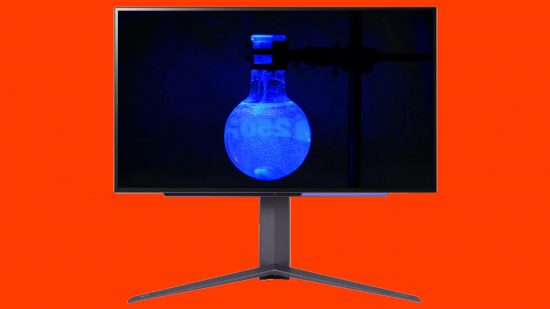As the adoption of OLED technology increases in gaming monitors, so too do concerns over burn-in. Display manufacturers are continuing to invent new methods to prolong the longevity of panels, but the issue can never be resolved unless the way in which OLED screens are manufactured undergoes significant change. As luck would have it, a group of researchers may have discovered the breakthrough we’ve all been waiting for.
It should come as no surprise that some of our best gaming monitor picks feature LG WOLED and Samsung QD-OLED panels, in large part due to their amazing response times and HDR capabilities. However, all these displays come with the inherent risk of burn-in, with the static icons on your operating system, as well as game menus, making these displays all the more prone to having images burned into them.

However, findings by University of Cambridge, published in Nature, may banish this problem to the inky black void from whence it came, through the design of a new light emitter molecule. What’s more, this design has many other potential pluses, in addition to removing the risk of burn-in.
OLED burn-in is primarily caused by instabilities following the release of electrical energy from the emissive layer of the panel. The intended outcome of this process is light, but excess energy can unintentionally be diverted and cause structural damage, with blue light proving to be particularly problematic in this regard.
In order to fix this, Dr Daniel Congrave and co-corresponding author Professor Hugo Bronstein added shields to the emissive layer that control how molecules interact and block destructive pathways. Congrave explains that “this molecule allows us to simplify the emissive layer of the blue pixel to only two components, while maintaining high efficiency, which could help to drive down cost.”
Cheaper OLEDs devoid of burn-in problems already sound like a promising start, but Congrave also says that the narrow property of this molecule is “very useful for screens because it allows for high color purity.” So, you can also add improved image quality to the list of improvements promised by this research.
It’s unclear how quickly this technology can make it out of the lab and into the manufacturing plants, if it does at all. However, following the recent and massive LG OLED investment, monitor makers are clearly looking at ways to refine the technology, and this mighty molecule looks like a prime contender to change the way OLED panels are made.
If you’re thinking about picking up an OLED gaming monitor, check out our LG Ultragear 27GR95QE review, particularly if you play competitive games. For the more ultrawide-inclined, look no further than our Samsung Odyssy G9 G95SC review, if you have deep enough pockets and a big enough desk to accommodate it.
